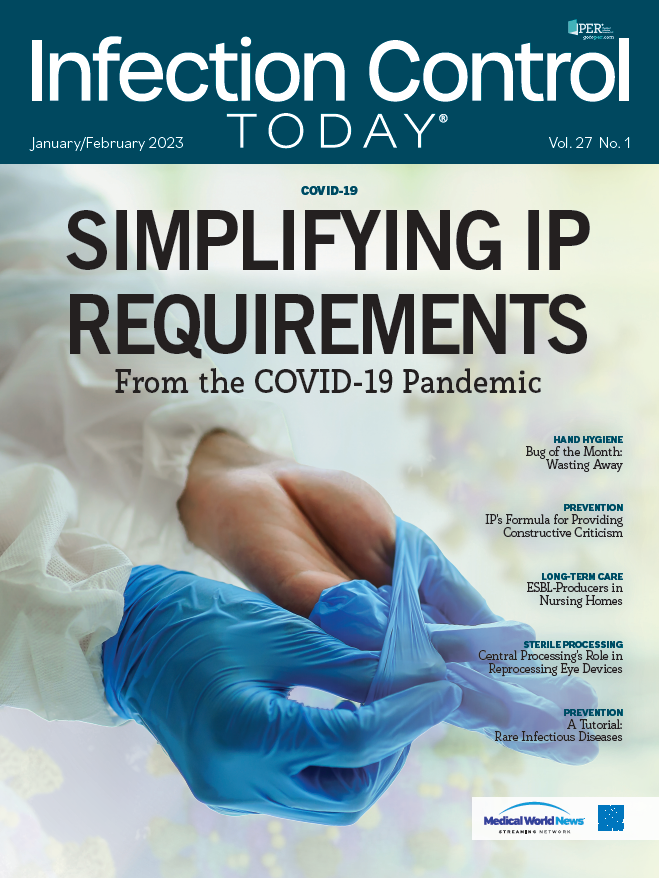Reducing C difficile Transmission by Drafting the ED and EMS
Most often, the first place a patient enters a hospital is through the emergency department and sometimes by emergency medical services. Where else to better stop Clostridioides difficile from coming into the hospital than at the entrance?
Clostridioides difficile, one of the most common health care-associated infections (HAIs), can cause diarrhea and inflammation of the colon, and it is estimated to cause almost half a million illnesses and tens of thousands of deaths in the United States each year.
To reduce the transmission of C difficile, early identification, treatment, and initiation of isolation precautions is vital. One way to begin those missions is to make the emergency department (ED) and emergency medical services (EMS) partners in any efforts to reduce C difficile infections.
When Emory University Hospital Midtown in Atlanta, Georgia tasked its infection prevention and control (IPC) department to decrease Clostridioides difficile in their hospital, IPC was up to the task. Jill Holdsworth, MS, CIC, FAPIC, CRCST, NREMT, manager, infection prevention; Aaron Milloy, MPH, infection prevention coordinator; Dr. Jordan Kaylor, MD, emergency medicine physician; and Dr. Patrick Meloy, MD, FACEP, emergency medicine physician; and Rita Richardson, RN, adapted a strategy that the hospital already had in place and implemented it in the emergency department.
Holdsworth, Miloy, Kaylor, and Meloy spoke to Infection Control Today® (ICT®) about their study on decreasing C difficile from that implemented strategy and that they presented as a poster at IDWeek Conference in Washington, DC, held on October 19-23, 2022.
The team took their “diarrhea decision tree,” a C difficile algorithm, which had been introduced to the emergency department in March 2021, to promote earlier testing and isolation of patients suspected of having C difficile, to detect any infections that are community onset against those that are hospital onset. Adapting this tool to fit their changing needs improved how they handled possible C difficile infections.
Milloy, in the exclusive interview with ICT®, said that this tool was “set up to help us discern, help us catch, any infections that are potentially community onset versus infections that may or may not be hospital onset. And it's been quite successful.”
Milloy explained how this change occurred. “When I first started this position, and took on C difficile as a project of mine, looking back at the data, you can see a steep decline in the number of C difficile infections right around the time when this algorithm went live at our facility. It's broken down between how long has the patient been here. On patient days 1 through 3, which if we catch C difficile at that time, we wouldn't be able to classify this as community onset. In those first 3 days, we're very liberal with our testing. Any unformed or loose stool, even if it's 1 bowel movement, our nurses can initiate this nurse-driven protocol can order the C difficile assay themselves, and immediately place the patient on precautions and await the results of the test."
However, the many things change after hospital days 4 or greater, Milloy explained. "[Then] we know that there's a lot of things that patients might receive during their hospital stay a lot of different procedures, that may explain why they're having diarrhea, loose stool, so we're much more conservative. We want to wait and see. Are there 3 or more unexplained loose stools? And then do they meet other criteria? Have they been off stool softeners and laxatives for at least 48 hours? And then do they have any other symptoms or risk factors? And if that is the case, the answer is yes to all those questions, and we want the nurse to reach out to the physician or [advanced practice providers] to order C difficile [assay] at that time, if they confirm it's appropriate. This algorithm has been very successful. Part of the biggest thing for C difficile is the earlier we can identify and isolate, the better outcomes for the patient as well as reduced transmission.”
Holdsworth added that the EMS team is important as well in being able to lower C difficile rates at the hospital. "We included [when] our EMS observed loose stools in this algorithm also, which a lot of times you won't hear from your EMS transports or your transports in by ambulance if they had loose stools or not. But this will hopefully prompt us to begin asking that as well and start partnering with our EMS agencies to make sure we're getting that information too. Because if these patients were reported having loose stools upon the EMS agencies getting to where they pick them up, or even in transport, that's important information that we find out too."

Robust infectious disease surveillance, including rapid subtyping of influenza A, is essential for early detection, containment, and public health reporting of novel viral threats.